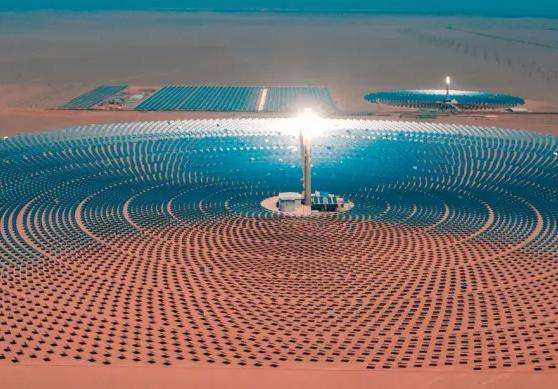Wind power generation class B:
Registered electrical (power generation, transmission and transformation) 1; first-level structural engineer 1; planning water conservancy and hydropower senior engineer 1; geology, water conservancy and hydropower senior engineer 1; water and soil conservation water conservancy and hydropower senior engineer Engineering 1; Environmental Protection Senior Engineer 1; Hydraulic/Wind Machinery and Metal Structure Senior Engineer 1; Hydrology and Meteorology Intermediate 1; Engineering Economics and Budgetary Intermediate 1, total 9
Processing Process
The first step is industrial and commercial registration
The second step is to purchase software (Beijing Construction Xinyuan Information Co., Ltd.)
The third step is to assign personnel and register personnel
Four steps to prepare the submission materials (online application and printing to form the submission materials)
The fifth step is to submit the materials
The sixth step is approval (approval process) Municipal Construction Committee-Provincial Construction Department
How many personnel are required to obtain Grade B qualification for wind power generation? How to do it?
First of all, your question is too general.
The wind power that the wind turbine can absorb P=1/2 (CpρπR^2U^3). Simply put, the wind power absorbed by the wind turbine is proportional to the cube of the wind speed, where Cp is Wind energy utilization coefficient. And this is only the theoretical power absorbed by the wind wheel. If it reaches the generator through the transmission system, there will be a loss.
As for the actual voltage, current and power emitted by the generator you asked about, they are determined according to the working conditions and motor power characteristics. For example, for some medium-sized machines, the voltage is 670V at rated wind speed. The power is 750kW. Most generators are rated in the range of several thousand to tens of thousands of volts. After it comes out, it needs to be boosted by the transformer station and filtered to eliminate harmonics before being supplied to the Internet.
Hope it can help you
If you are a beginner, I suggest you buy two books,
"Wind Engineering and Industrial Aerodynamics" by He Dexin.
"Wind Energy Technology" written by Tony Burton and translated by Wu Xin and others
The question you added is that the custom is between 10m/s and 20m/s, and the electricity is generated between 20 and 30V. Of course there is absolutely no problem. What use do you have with such a small voltage?
As for the cost, this cannot be determined immediately. If you already have a good usage address, that is, a wind farm, it will not cost you much to generate such a small amount of electricity. You can use a small The vertical axis wind turbine is placed on the roof and can be directly driven. The main cost is the motor, and everything else is cheap. You have completed the overall design plan, and then ask the parts supplier for a price. There is no need for a tower or large-scale hoisting, and it does not cost much money.
By the way, sending this little call, haha, it’s not worth it, personal opinion. I wish you a happy job
3000 seems a bit high. The key is that this is your own new idea. It is not a mass-produced product and the labor cost is very high.
Parts such as small motors + gears + wires + bearings are relatively easy to say, but your blades, steering mechanisms, brake pads, etc. must be specially made. Unless you are a carpenter or lathe, otherwise it will cost 3,000It should not be possible, so you should save some space, add a small budget, try to save as much as possible, maybe it will work, because your machine is small and the technical requirements are not very high.
How about you look for a complete set of suppliers directly? There are complete manufacturers of small wind turbines, and some buy more than 2,000 units.
In the power industry, this belongs to the 21 industries with engineering design qualifications. In the electric power industry, the electric power industry has 6 categories, including wind power, thermal power, hydraulic power, new energy, power transmission and transformation, and wind power generation with Class B and Class A grades.
Wind power generation level B requires the following registered personnel (only social insurance is available)
One person for power generation, transmission and transformation, 400,000 for three years
One person for the first-level structure 29 Ten thousand three years
Planning water conservancy and hydropower 1 person 07,000 per year
Geological water conservancy and hydropower 1 person 0.7 million per year
Soil and water conservation water conservancy and hydropower 1 person 0.7 million One year
Environmental protection costs 0.7 million per person per year
Wind power costs 8.08 million per person per year
Hydrometeorology costs 7,000 per person per year
The estimated budget is 0.7 million per person per year
The leading majors in wind power engineering are: power generation and transmission, planning, geology, soil and water conservation, environmental protection, hydraulic/wind machinery and metal structures, hydrology and meteorology , 9 majors in engineering economics and budget estimation. Special qualifications for wind power engineering design, geology majors can also be equipped with registered geotechnical engineers
Qualification process:
1. Industrial and commercial registration;
2. Purchase the system of the Ministry of Construction or the Department of Construction;
3. Allocate personnel and register personnel;
4. Prepare submission materials (online declaration and printing) Paper materials);
5. Submit information;
6. Approval (approval process) Municipal Construction Committee - Construction Department - Ministry of Construction - Public Notice.














